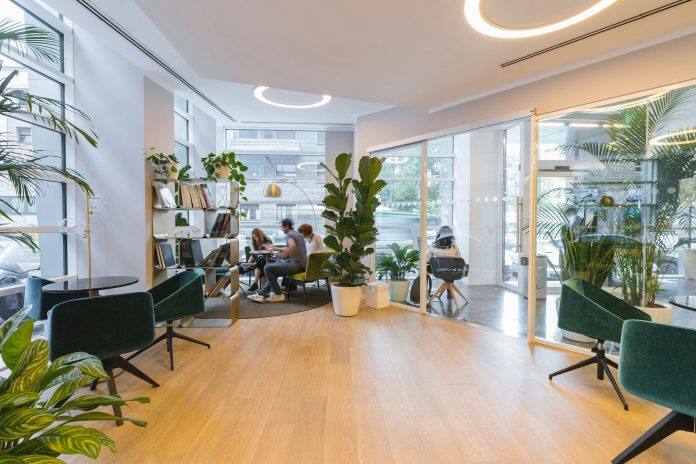As the evening draws in and the natural light dims outside, the flick of a switch illuminates our homes, extending our day well into the night. But at what cost? With energy bills on the rise, many of us are seeking ways to reduce our consumption without living in the dark. Enter smart lighting solutions, a bridge between convenience and conservation. This exploration into smart lighting choices will not only enlighten your understanding but also light up your home more efficiently.
Understanding Smart Lighting
Before diving into the sea of savings, let’s first understand what constitutes smart lighting. In essence, it goes beyond the simple on and off. It encompasses the control of intensity, color, schedules, and even responses to daylight availability through automation. This adaptability not only enhances the ambiance of your home but also plays a pivotal role in reducing unnecessary energy consumption.
Shedding Light on Efficiency: LED vs. Incandescent Bulbs
One of the first steps in smart lighting is understanding the benefits of LEDs over their incandescent counterparts. The leap from incandescent to LED lighting is akin to switching from a gas guzzler to an electric vehicle in terms of energy efficiency. The numbers are striking, with LEDs consuming up to 75% less energy and lasting 25 times longer.
For those looking to apply this efficiency on a larger scale, such as in commercial workspaces or garages, exploring the use of high quality LED shop lights can further enhance energy conservation while ensuring optimal illumination. These lighting solutions are specifically designed to cater to larger spaces, offering both brightness and durability.
The Impact of Lighting on Energy Bills
It’s illuminating to note that lighting accounts for a significant chunk of household energy bills. With traditional lighting methods, the wastage is as glaring as an unshaded bulb. However, smarter lighting choices can significantly cut down this expenditure, casting both a literal and metaphorical light on efficiency.
Behavioral Adjustments for Energy Savings
Technology alone cannot fully optimize energy savings without a complementary shift in behavior. Being mindful of lighting usage, and making conscious choices such as maximizing natural light during the day, can amplify the benefits of smart lighting. It’s a synergy between human action and technological innovation that truly makes lighting smart.
Automation and Control: The Cornerstones of Smart Lighting
Automation in lighting allows for the control of lights remotely or through scheduling, ensuring that lights are on only when needed. This can be through motion sensors, daylight sensors, or even geofencing, which adjusts lighting based on your location. Such technologies not only reduce energy consumption but also add a layer of convenience and security to our homes.
Integrative Strategies for Home Lighting
Moving beyond individual bulb replacements, integrating smart lighting into your home’s ecosystem can offer holistic benefits. Strategies such as zoning, which involves grouping lights by area, and scene-setting, which adjusts lighting based on activities, can enhance both the functionality and the atmosphere of your home. This approach ensures that lighting is not just smart by products but smart by design.
Embracing Renewable Energy Sources
Alongside choosing efficient lighting, integrating renewable energy sources like solar panels can further reduce dependency on traditional energy grids. Many smart lighting systems are now compatible with solar-generated electricity, ensuring that your lighting solutions are not only smart but also sustainable. This shift towards renewable energy not only impacts your energy bills but also contributes to a healthier planet.
Investing in Smart Lighting as a Long-term Saving Strategy
While the initial cost of transitioning to smart lighting can be higher compared to traditional bulbs, it’s crucial to view this investment through the lens of long-term savings and benefits. The combination of significantly lower energy use, longer lifespans of LED bulbs, and the ability to control and optimize lighting based on actual needs translates into substantial savings over time. Additionally, the reduction in energy consumption contributes to environmental conservation, aligning your home’s lighting with broader sustainability goals.
Future Trends in Smart Lighting
The future of smart lighting is bright, with advancements continuously emerging in the field. Technologies such as Li-Fi, offering internet connectivity through light waves, and further integration with smart home systems, promise to enhance the convenience and efficiency of our lighting. As smart lighting technology evolves, the potential for energy savings and environmental impact grows, offering exciting opportunities for innovation in our homes and cities. The journey towards smart, efficient, and sustainable lighting solutions is just getting started.
Conclusion
In our quest to dim our energy bills and not our living spaces, smart lighting emerges as a beacon of hope. It’s a journey from wasteful illumination to enlightened efficiency. As we adjust our lighting choices, not only do we witness a reduction in our bills, but we also embrace a lifestyle that’s in harmony with the world around us. The light at the end of this energy-saving tunnel is indeed bright, guiding us to a future where our homes beam with both light and intelligence.



 Bitcoin
Bitcoin  Ethereum
Ethereum  Tether
Tether  Solana
Solana  XRP
XRP  USDC
USDC  Cardano
Cardano  Lido Staked Ether
Lido Staked Ether  TRON
TRON  Avalanche
Avalanche  Toncoin
Toncoin